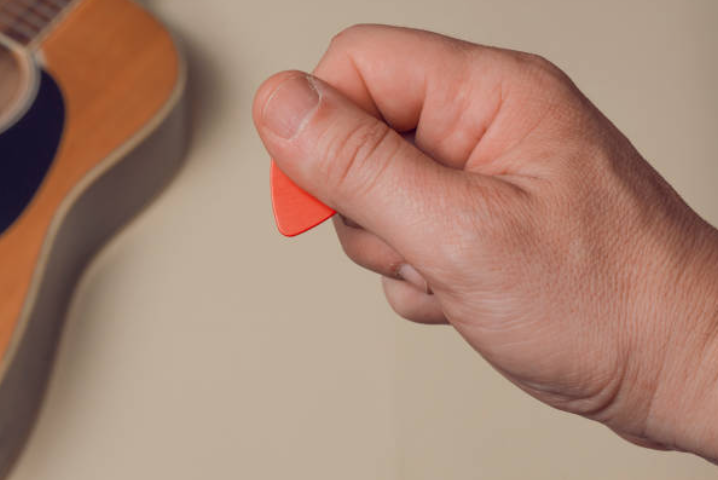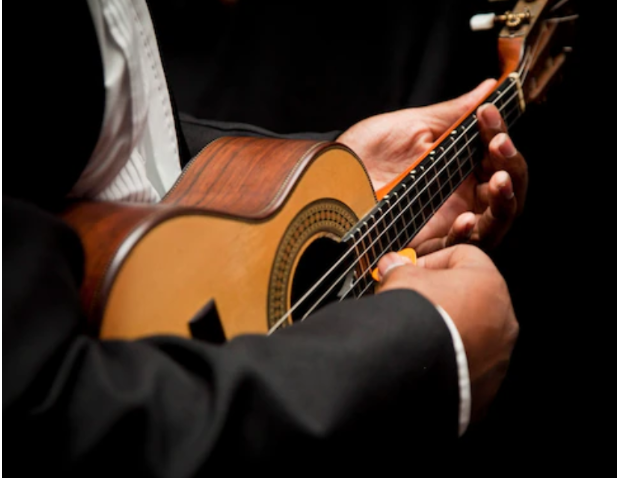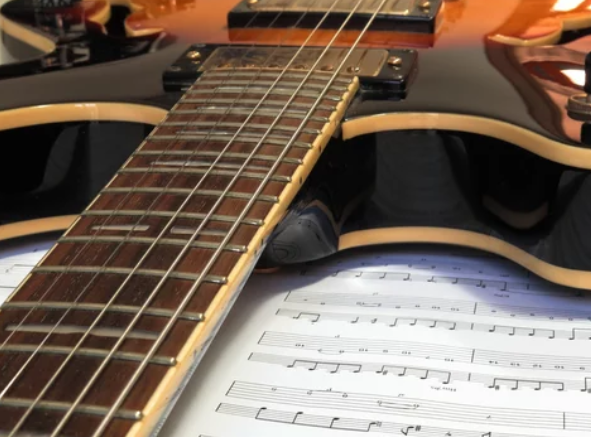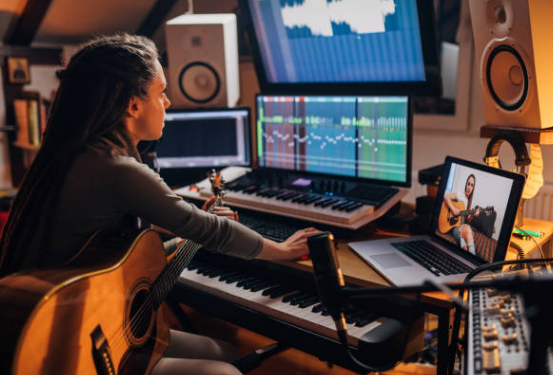How To Play The Major Pentatonic Scale – Super Easy
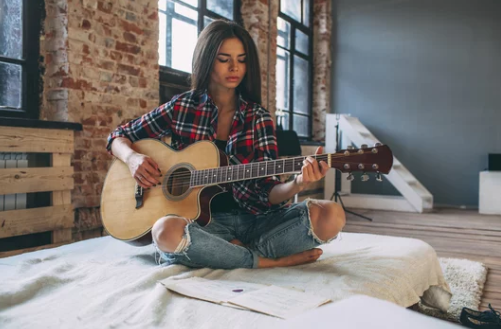
Learning the major pentatonic scale is a great step in expanding your musical vocabulary on the guitar! The major pentatonic scale is essentially a 5-note scale that is derived from the major scale, by removing the 4th and 7th degrees. This gives it a bright and upbeat sound, making it popular in a wide range of music genres.
Pentatonic Scale Theory
Unlike the major scale, which is a 7-note scale, the major pentatonic scale consists of five notes (“penta” = five, “tonic” = notes) as we said above. The 5 notes of the major pentatonic scale are the root, 2nd, 3rd, 5th, and 6th degrees of the major scale (the 4th and 7th scale degrees are left out).
Pentatonic Scale Formula
- Root
- Major 2nd
- Major 3rd
- Perfect 5th
- Major 6th
How To Play It?
When playing the scales, it’s important to start and end on the root note of the position as this reinforces the tonal center of the scale and also helps with learning the root note positions.
Remember the 4th and 7th intervals aren’t part of the major pentatonic, so each scale position results in a two-notes per string pattern. The suggested fingerings for these are either 1-3 (index and ring fingers) or 1-4 (index and pinky).
To explain the positions, we will use the G major pentatonic scale as an example:
Position 3
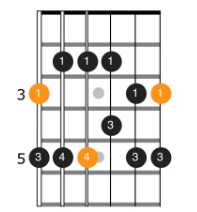
- String 6 (Low E): Start with your middle finger on the 3rd fret (G note), then play the 5th fret with your pinky finger (A note).
- String 5 (A): Play the 2nd fret with your index finger (B note), then the 3rd fret with your middle finger (C note), and finally the 5th fret with your pinky finger (D note).
- String 4 (D): Play the 2nd fret with your index finger (E note) and the 5th fret with your pinky finger (G note).
- String 3 (G): Play the 2nd fret with your index finger (A note) and the 4th fret with your ring finger (B note).
- String 2 (B): Play the 3rd fret with your middle finger (D note) and the 5th fret with your pinky finger (E note).
- String 1 (High E): Match the pattern of the 6th string, playing the 3rd fret with your middle finger (G note) and the 5th fret with your pinky finger (A note).
Position 5
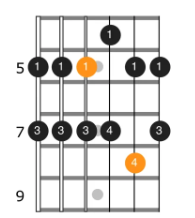
- String 6 (Low E): Play the 5th fret with your first finger (A note), and then the 7th fret with your third finger (B note).
- String 5 (A): Play the 5th fret with your first finger (D note), and then the 7th fret with your third finger (E note).
- String 4 (D): Play the 5th fret with your first finger (G note), and then the 7th fret with your third finger (A note).
- String 3 (G): Play the 5th fret with your first finger (B note), and then the 7th fret with your third finger (D note).
- String 2 (B): Play the 7th fret with your third finger (E note).
- String 1 (High E): Match the pattern of the 6th string, playing the 5th fret with your first finger (A note), and then the 7th fret with your third finger (B note).
Position 7
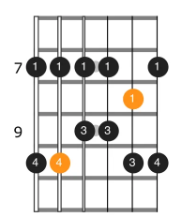
- String 6 (Low E): Skip this string, as it’s not used in this position for the G major pentatonic.
- String 5 (A): Play the 7th fret with your first finger (E note), then the 10th fret with your fourth finger (G note).
- String 4 (D): Play the 7th fret with your first finger (A note), and then the 9th fret with your third finger (B note).
- String 3 (G): Play the 7th fret with your first finger (D note), and then the 9th fret with your third finger (E note).
- String 2 (B): Play the 8th fret with your second finger (G note), and then the 10th fret with your fourth finger (A note).
- String 1 (High E): Match the pattern of the 5th string, playing the 7th fret with your first finger (E note), and then the 10th fret with your fourth finger (G note).
Position 10
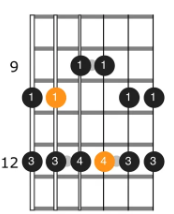
- String 6 (Low E): Play the 10th fret with your first finger (D note), and then the 12th fret with your third finger (E note).
- String 5 (A): Play the 10th fret with your first finger (G note), and then the 12th fret with your third finger (A note).
- String 4 (D): Play the 9th fret with your first finger (B note), and then the 12th fret with your fourth finger (D note).
- String 3 (G): Play the 9th fret with your first finger (E note), and then the 12th fret with your fourth finger (G note).
- String 2 (B): Play the 10th fret with your first finger (A note), and then the 12th fret with your third finger (B note).
- String 1 (High E): Match the pattern of the 6th string, playing the 10th fret with your first finger (D note), and then the 12th fret with your third finger (E note).
Position 12
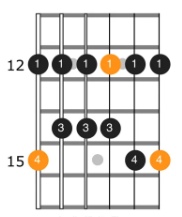
- String 6 (Low E): Play the 12th fret with your first finger (E note), then the 15th fret with your fourth finger (G note).
- String 5 (A): Play the 12th fret with your first finger (A note), then the 14th fret with your third finger (B note).
- String 4 (D): Play the 12th fret with your first finger (D note), then the 14th fret with your third finger (E note).
- String 3 (G): Play the 12th fret with your first finger (G note), then the 14th fret with your third finger (A note).
- String 2 (B): Play the 13th fret with your second finger (B note), then the 15th fret with your fourth finger (D note).
- String 1 (High E): Match the pattern of the 6th string, playing the 12th fret with your first finger (E note), and then the 15th fret with your fourth finger (G note).
Interested in taking your guitar skills to the next level? Click the below and book a free lesson with us! We’re committed to helping you express yourself freely on the guitar without endless scales and theory. Happy playing!
Author: Daniel Powers Jr, the founder of Real Brave™, serves as the chief inspiration to thousands of students in the Real Brave music instruction program. He’s also the visionary behind PracticePad™, an online platform for live one-on-one online music lessons, lesson tracking, and scheduling. Beyond his entrepreneurial pursuits, Daniel leads a non-profit organization that provides formerly homeless children with access to music education, making a profound impact on their lives. His unwavering dedication to music, innovation, and education continues to inspire individuals to reach their fullest potential while creating positive change in communities. Follow Real Brave on all the socials:
youtube.com/@realbraveinc
twitter.com/realbraveinc
https://www.tiktok.com/@realbraveinc
instagram.com/realbraveaudio
facebook.com/realbraveinc



